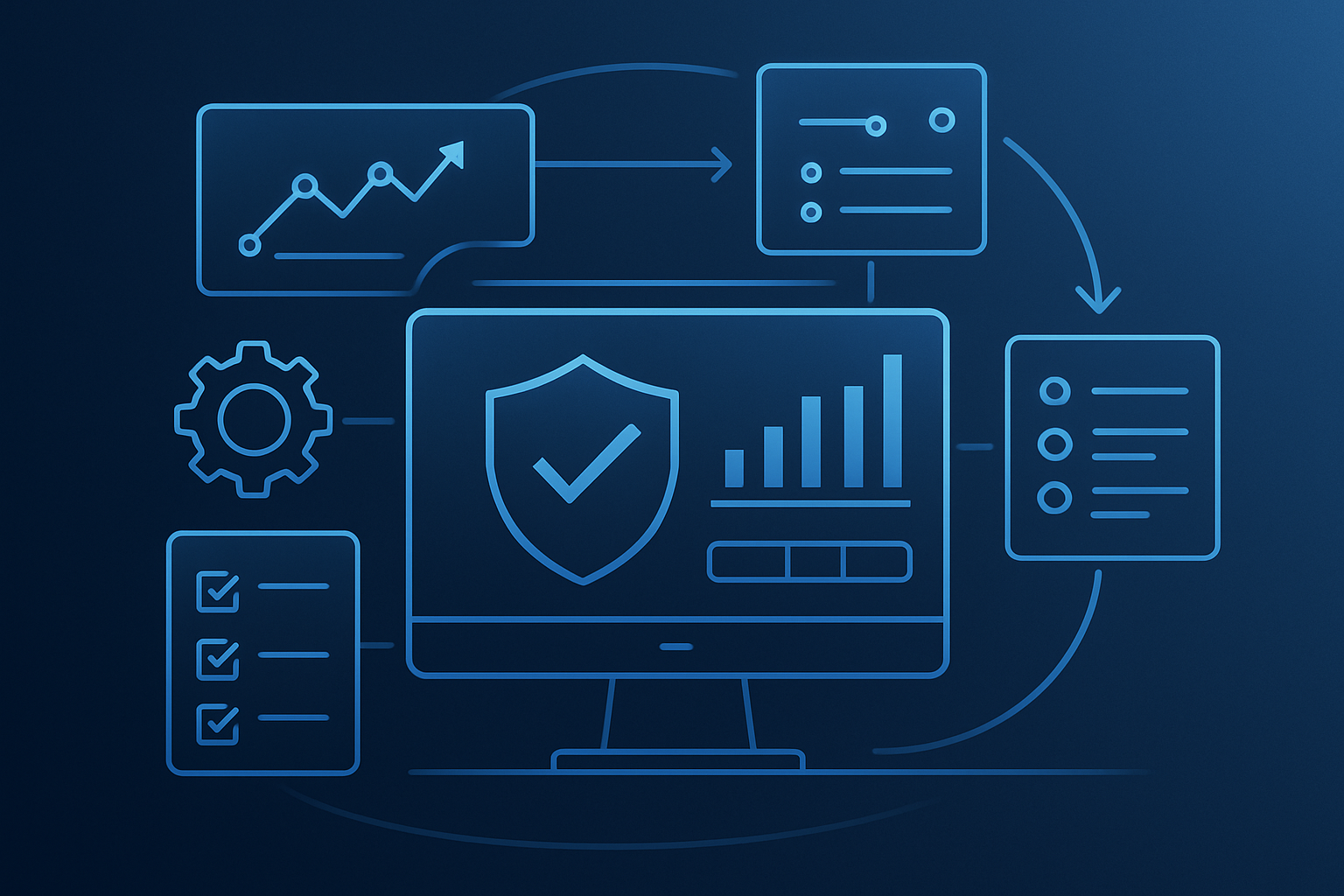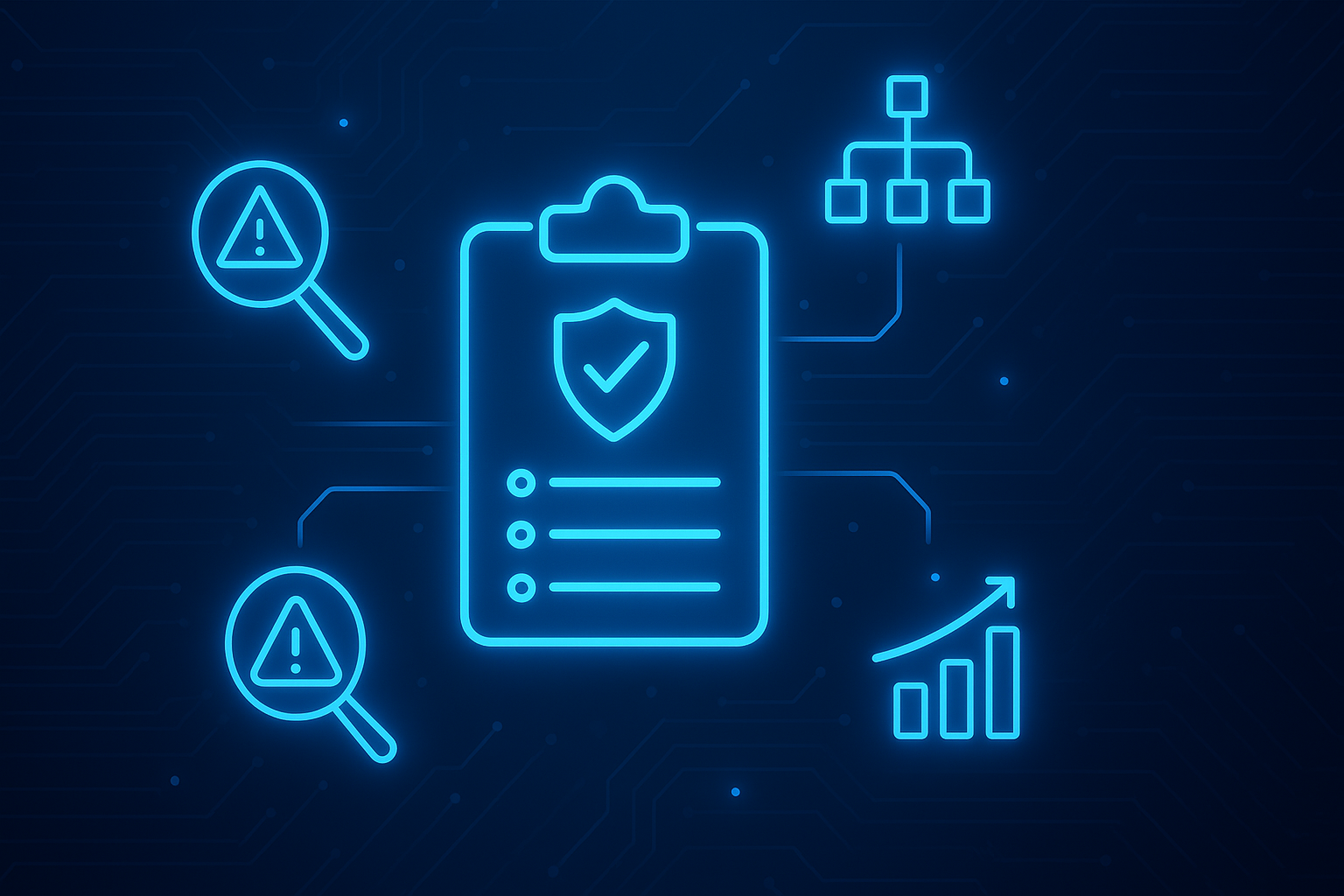The risks associated with cybersecurity can be overwhelming for many organizations. Building a robust cybersecurity program can be complicated for any organization, regardless of its size. Yet, the cybersecurity benefits of baselining to an industry-standard guide are worth the restructuring that might be involved. Frameworks are not a new concept to cybersecurity professionals, and the benefits are immense; nor do they need to be complicated to be effective. Here, we’ll dive into the benefits of the NIST Cybersecurity Framework (CSF) and why it should be a cornerstone for your cybersecurity solution.
Background of the NIST CSF
The National Institute of Standards and Technology developed the Framework for Protecting Critical Infrastructure Cybersecurity in response to an executive order from President Obama. The first version of what would be later dubbed the NIST CSF was released in 2014. What was unique about the development of V1 was its decentralized and collaborative approach.
With thousands of independent contributors and the framework drawn from a decentralized sample of the population, making unique contributions (industry professionals and cybersecurity experts), it accounts for its wide-reaching value.
Following the release of V1, the NIST CSF was adopted by more than critical infrastructure organizations. The flexible nature of the new gold standard enabled businesses of all sizes, both public and private, to adopt and implement the NIST CSF.
Version 1.1 of the CSF was released in 2018, further expanding the Framework's applicability.
The Case for the CSF: Harnessing the Wisdom of Crowds
The internet age has enabled an exponential increase in diversity of thought and contribution.
Those with a hand in creating the framework knew the importance of creating a “framework to live by” – they shared the same vision. These individuals were sourced from diverse roles and industries, and they held varying viewpoints and perspectives on data security and cyber risk management. This crowdsourcing methodology is precisely what makes the NIST Cybersecurity Framework so robust. It draws from every angle the priorities and use cases of its creators, resulting in a framework that adds depth and breadth to your organization while being flexible enough to accommodate large and small businesses.
The Benefits of the NIST Cybersecurity Framework
As adoption of the NIST CSF continues to increase, explore the reasons you should join the host of businesses and cybersecurity leaders adopting this gold-standard framework:
- Superior and unbiased cybersecurity
- Enable long-term risk management in cybersecurity
- Ripple effects across supply chains and vendor lists
- Bridge the gap between technical and business-side stakeholders
- Flexibility and Adaptability of the Framework
- Built for future regulation and compliance requirements
Superior and Unbiased Cybersecurity
As discussed earlier, the NIST CSF is a voluntary approach that represents the collective experience of thousands of information security professionals. It is widely recognized as an industry best practice and the most comprehensive, in-depth set of framework controls. Shoring up an organization against cyber threats and attacks is the top priority for any cybersecurity leader or practitioner, and the NIST CSF is a necessary part of that mission.
Harnessing that crowd-based wisdom enables you to fill in blind spots you didn’t know you had and enables leaders to understand the perspectives of all members of their organization.
Enable Long-term Cyber Risk Management
The CSF enables your organization to transition from a ‘one-off’ audit compliance and risk assessment mindset to a more adaptive and responsive posture for managing cybersecurity risk. Continuous compliance is a much stronger strategy that supports response and recovery functions. While this may seem daunting, the right tools enable a continuous compliance approach using the CSF with ease.
Enhance Supply Chain Management with the CSF
We have seen partners or clients ask an organization, “Where are you on the Framework?” The response to this question can be a deal-maker or a deal-killer. Cyber risk management strategies and security posture are becoming a substantive selling point. Using a gold standard like the NIST CSF fosters trust between partners and enables faster business growth while maintaining security.
Bridge the Gap Between Stakeholders
The NIST CSF is based on a risk-based approach, which executives are familiar with. This approach enables an integrated cyber risk management approach to cybersecurity aligned with business goals. The result is better communication and decision-making throughout your organization. Security budgets will be better justified and allocated. Adoption develops a common language for business and technical stakeholders to share, facilitating improved communication throughout the organization from practitioners to the Board and CEO.
Flexible and Adaptable Benefits of the CSF
The CSF is the most flexible framework, given its risk-based, outcomes-driven approach. It has been successfully adopted by many industries, from sizable critical infrastructure firms in energy, transportation, and finance to small and medium-sized enterprises. Being a voluntary framework, it is highly customizable. The Core Functions are intuitive, and together with the Implementation Tiers and Profiles, they form an easy-to-understand blueprint that facilitates adoption and provides ongoing guidance.
Scale for the Future with the NIST CSF
Organizations and government agencies implementing the Framework are in a much better position as regulations and laws change and new ones emerge. Regulations such as NYDFS 23 NYCRR 500 and the insurance industry’s Model Law utilize the NIST CSF as a foundation for their compliance standards and guidelines. This trend impacts private industries beyond critical infrastructure. The compliance bar is rising, a trend that is likely to continue across all sectors.
Many CISOs and security leaders are concerned about the increasing number of compliance requirements across various industries and geographies. The NIST CSF is the most reliable security measure for building and implementing a cybersecurity program to prepare for new updates to existing standards and regulations.
Endless Benefits of a Risk-First Framework
The NIST CSF is a powerful asset for cybersecurity practitioners. Given its flexibility and adaptability, it is a cost-effective way for organizations to approach cybersecurity and foster an enterprise-wide conversation around cyber risk and compliance. Managing cybersecurity today is rapidly escalating to a Board- and CEO-level issue, and information security leaders must be prepared to articulate their program effectively. Not only is the NIST CSF an asset for practitioners, but it is also a critical part of the bridge between technical- and business-side stakeholders.
Contact us to learn which security framework is best for your organization and how CyberStrong can streamline compliance and risk assessments. See Also: NIST 800-53 Control Families





.png)
.png)
.png)
%201.png)
.png)





